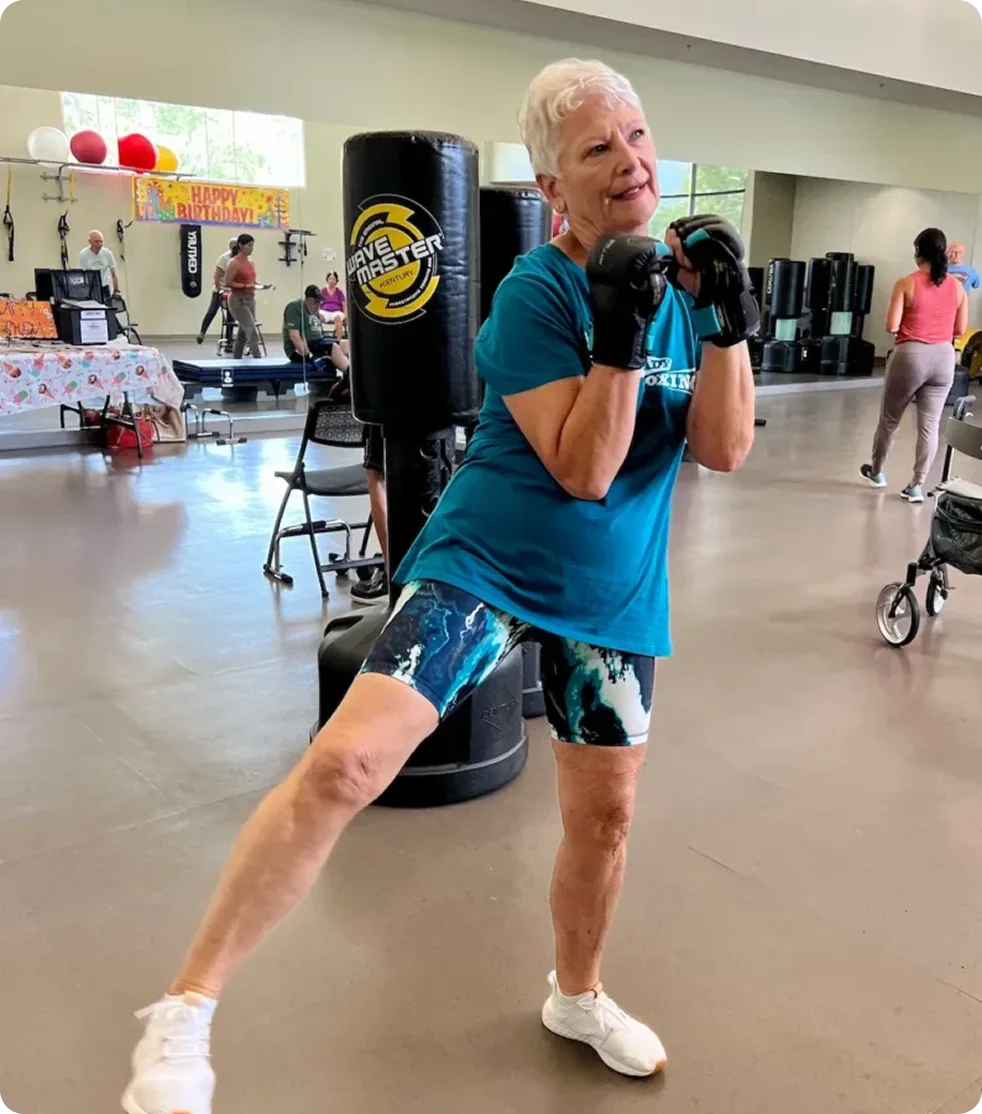When Lori was diagnosed with Parkinson’s disease in her mid-50s, it wasn’t unfamiliar territory. Her mother, uncle, and brother had all lived with PD, and Lori had served as a caregiver for both her mother and brother during their most challenging years. But when it became her own reality, the path ahead still felt uncertain.
Born and raised on a farm in New York State, Lori developed a strong sense of independence and resilience early in life. At 21, she became a mom, later building a fulfilling career in hospital administration, software development, and the travel industry. She’s always been someone who thrives when she’s creating—whether that’s designing her wardrobe, volunteering at boxing training sessions, or making people feel seen and heard.
Her hobbies are just as dynamic as her professional life was: boxing three times a week, volunteering at clinics for people with disabilities, walking in senior games, and even participating in triathlons and Disney marathons for friends and causes she loves. She’s also an active patient advocate and speaker with several Parkinson’s organizations, sharing her time and voice to raise awareness and inspire others to stay involved and optimistic.

But despite her positivity, Parkinson’s brought real challenges. Lori struggled with the burden of frequent dosing and meal coordination while on immediate-release medications. Dyskinesia, blood pressure fluctuations, and energy dips began to interfere with the lifestyle she loved so much. For a time, she worried that independent living might become harder to manage.

That changed when Lori read about CREXONT® (carbidopa and levodopa) extended-release capsules. She brought it up to her care team and began treatment in November 2024. Since then, she says she’s noticed a real difference—not just in how she feels physically, but in how her days flow. “Before, I felt like I was constantly fighting for control,” she shares. “Now, I have the freedom to focus on the things I enjoy again—sewing, getting outside, helping others.”
Today, Lori takes CREXONT four times a day. The transition has allowed her to step away from the rigid schedule she was once tied to, and she expressed that her symptoms have become more manageable. She shared that she feels like her sleep patterns are more consistent, her mobility has improved, and most importantly, she feels more like herself again.
She’s especially passionate about helping others with PD know they’re not alone. Lori encourages patients to seek out support programs from the PD community, stay informed, and advocate for themselves and others. Whether she’s organizing a walk, testifying on environmental policy, or talking to her local mayor about pesticide use in public spaces, she’s always working to make things better—for herself and for the PD community at large.
“Even when you feel like you can’t change everything, you can always reach someone,” she says. “That’s what keeps me going.”
Lori’s experience with CREXONT is her own and may not reflect the experience of every patient. For some patients, CREXONT may cause falling asleep during daily activities. Side effects may include nausea and anxiety. Individual results will vary. Talk to your patients to see if CREXONT is right for them. Only an HCP should assess each patient’s condition and advise them on treatment options.




